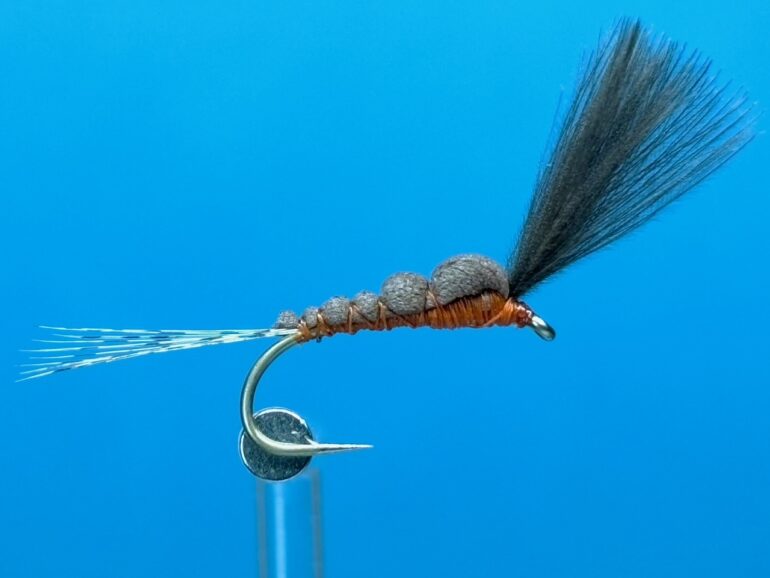
A Fly to Tie and Try for June by Les Lockey
The Foam and CDC Dun – (Neil Sinclair) by Les Lockey
Hook: Kamasan B170 or B400, lightweight dry fly hook, sizes 12 – 14, or similar.
Thread: Burnt orange or pale olive UTC 70.
Tail: Coq de Leon hackle fibres.
Body: 2x2mm. strip of brown foam.
Wing: 3 or 4 natural CDC feathers.
TYING
Photo 1. With the hook secured in the vice, wind on a short bed of thread, remove the waste thread and return the thread to a head length back from the eye.
Photo 2. Align the tips of 3 or 4 CDC feathers and with the tips pointing out over the eye, tie them in securely. Cut off the waste CDC feathers, tidy the area with thread and in touching turns, wind the thread to the rear of the thorax.
Photo 3. Align a few Coq de Leon hackle fibres, remove them from the feather stem and tie them in as a tail, about the same length as the body. Bind down the tail fibres to just before the hook bend and trim off the waste ends. Return the thread to the base of the CDC feathers in touching turns.
Photo 4. From a sheet of 2mm. thick brown craft foam cut a strip 2mm. wide and pinch off one end to form a small, tapered point. Tie in the foam strip by the tapered point leaving the foam strip forward of the eye. Continue to tie down the foam on top of the CDC base forming a thread thorax.
Photo 5. To create the first segment, bring the foam strip back over the shank and slightly push it towards the eye forming a small bulge of foam and secure it to the shank with 2 turns of thread.
Photo 6. Lift up the foam and take a couple of turns of thread rearward over the shank, then create a second, slightly smaller segment by pushing the foam forward slightly less than before and secure the foam with two more turns of thread.
Photo 7. Continue the sequence, but this time don’t push the foam forward. Secure with two turns of thread and continue to wind the thread under the foam a couple of turns rearward. For the fourth segment, pull the foam gently rearward and secure with thread then take the thread to the base of the tail. Finally, for the last segment, stretch the foam and secure with thread, and keeping the thread tight, pull the foam until the excess foam breaks off.
Take a turn of thread under the tail fibres to realign the fibres, then take the thread back up the body following the segmentation gaps finishing in front of the CDC feathers at the eye.
Photo 8. Wind the thread back against the CDC feathers to cock them upwards, tidy the head, whip finish and remove thread. Varnish the head to complete the fly.
Tying tips
- The construction of this fly is rather unusual but quite straightforward. The segmented body is formed from a piece of 2x2mm. foam which is first pushed and then pulled to form graduated bulges down the shank. The amount of pushing and pulling required may take a little practice to get right.
- As the thread underbody will be visible, it is important to try to wind the thread in touching turns wherever possible.
- When tying in the CDC feathers, make sure to leave enough space at the eye for the head.
- After securing the tail fibres, I make one thread turn under the tail and pull the thread towards the eye which helps to lift and spread the tail fibres.
- If Coq de Leon feathers are not available, a barred pale ginger or badger cock hackle fibres are a good alternatives.
- In order to obtain the segmented foam effect, limit the securing thread wraps to a maximum of two turns and spin the bobbin clockwise to keep the thread round in profile.
- Although this fly was designed as an Olive Dun, the overall design can be easily tweaked to make a very effective hatching buzzer. Firstly change the hook to a heavier size 12 Kamasan B175 and change the colour of thread and foam to black. Use short white cock hackle fibres for the tail which should be tied round the bend and pointing downwards and add a little black dubbing prior to forming the first foam segment.
Fishing hints
- Neil Sinclair is one of the finest dry fly anglers in Scotland, so when he comes up with a dry fly pattern it is wise to pay particular attention.
- I find this pattern fishes best on still waters when olives are on the water, but on rivers it can be effective whenever any up winged flies are present.
- I usually fish the fly singly on a floating line with a tapered leader, but it can also be fished as part of a team of dries and or emergers.
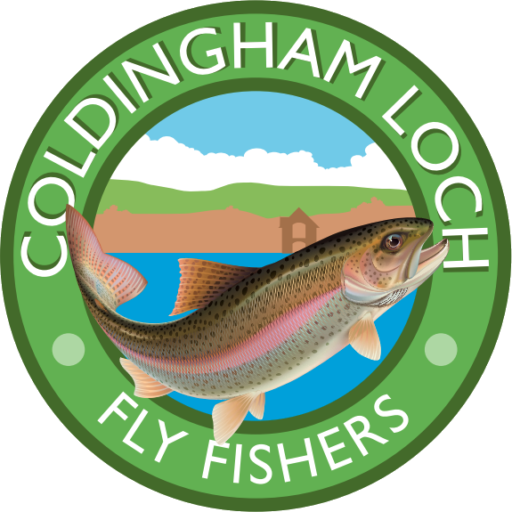




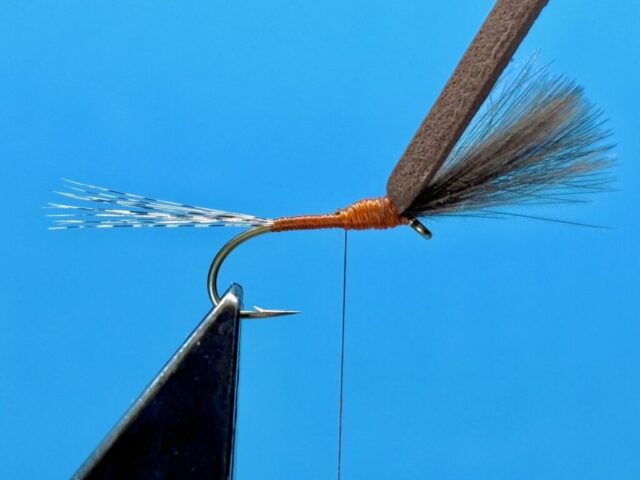

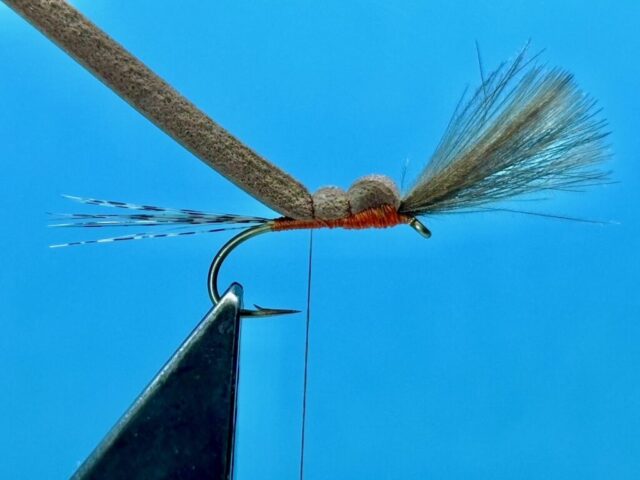
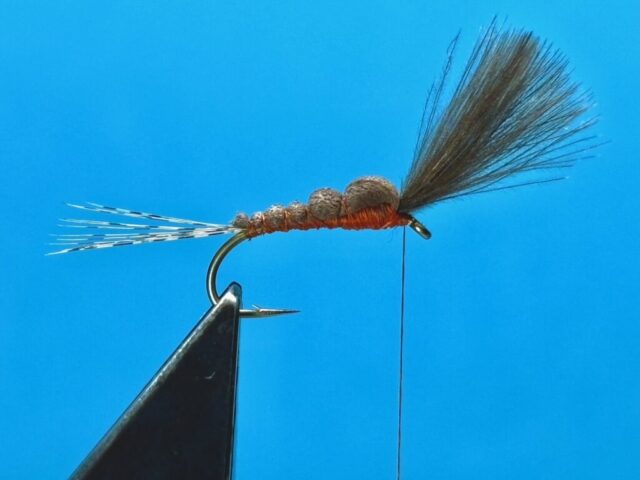


Recent Comments